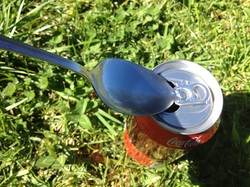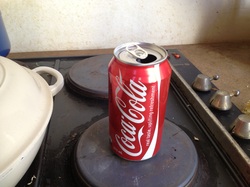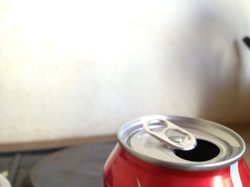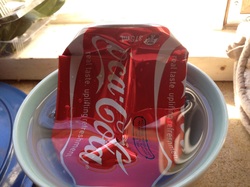What you need:
- 1 can
- water
- tongs
- source of heat
Step 1: Get your can and pour 3 tablespoons of water inside the can.
Step 2: Place the can on your hot plate/stove top.
Step 3: Look for steam coming out. When the steam starts coming out leave it for 1 more minute.
Step 4: Now it should be ready, grab the can with tongs and flip upside down quickly into a bowl of cold water.
Step 2: Place the can on your hot plate/stove top.
Step 3: Look for steam coming out. When the steam starts coming out leave it for 1 more minute.
Step 4: Now it should be ready, grab the can with tongs and flip upside down quickly into a bowl of cold water.
Hints & tips
- The colder the water, the better.
- Try not to melt the ink.
- Wait for it to bubble if your'e not too sure how long to leave it on.
Why does this happen?
Well you see this experiment all revolves around air pressure - though before we go to that let's begin from the beginning. First of all the can had some water in it right, well when you heated up the can heating the water inside the water turned to water vapour pushing all the air out. So when you tipped the can into the cold water the water vapour condensed back into about drops of water. Now water molecules are way closer together than in a gas state so it took up much less space. This small amount of water cannot produce much pressure on the inside of the cans walls, the outside pressure of air is stonger crushing the can.
Well you see this experiment all revolves around air pressure - though before we go to that let's begin from the beginning. First of all the can had some water in it right, well when you heated up the can heating the water inside the water turned to water vapour pushing all the air out. So when you tipped the can into the cold water the water vapour condensed back into about drops of water. Now water molecules are way closer together than in a gas state so it took up much less space. This small amount of water cannot produce much pressure on the inside of the cans walls, the outside pressure of air is stonger crushing the can.




